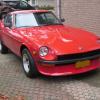IGNORED
Fitting a HEI Module in Transistor Ignition Unit 1977 280Z
-
Recently Browsing 0 members
- No registered users viewing this page.
-
Who's Online 0 Members, 0 Anonymous, 173 Guests (See full list)
- There are no registered users currently online


Recommended Posts
Create an account or sign in to comment
You need to be a member in order to leave a comment
Create an account
Sign up for a new account in our community. It's easy!
Register a new accountSign in
Already have an account? Sign in here.
Sign In Now